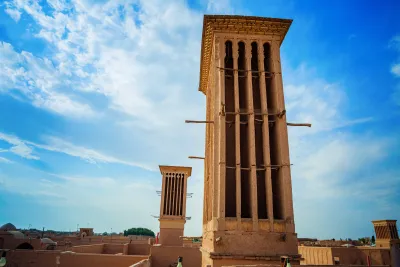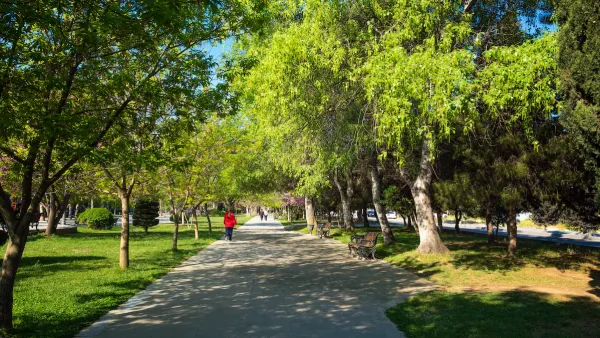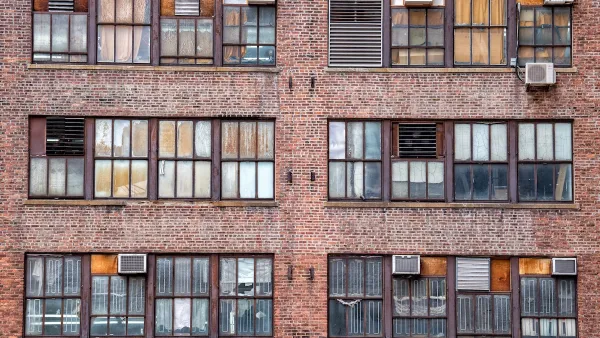Cooling mechanisms built into traditional architecture offer lessons for U.S. builders as heat waves grow more intense.

In an article in Time, Anna Gordon describes the centuries-old Middle Eastern architectural cooling techniques that could help U.S. households reduce their reliance on air conditioning, which “is believed to cause 1,950 million tons of CO2 emissions per year around the world, accounting for almost 4% of global carbon emissions.”
John Onyango, a professor at the University of Notre Dame School of Architecture, told Gordon, “Barajeels have passively cooled buildings for centuries. These wind towers can lower temperatures by up to 50 degrees Fahrenheit depending on how they are designed and the levels of wind.” These devices “work by funneling hot winds from outside to the lower floors of the building or even underground, where the air is cooled naturally. The cooled air is then released inside the building. So long as there is wind flowing, the barajeel works without ever requiring electricity.”
Other ways to improve air flow and cooling include chimney-like structures in tall buildings and high dome-shaped roofs. Gordon also points out the energy efficiency of many traditional Middle Eastern building materials. “Unlike the production process for steel or concrete, the production of stone and mud bricks does not lead to large amounts of carbon emissions.”
FULL STORY: The U.S. Should Ditch AC and Use Middle Eastern Techniques to Cool Its Cities

Analysis: Cybertruck Fatality Rate Far Exceeds That of Ford Pinto
The Tesla Cybertruck was recalled seven times last year.

National Parks Layoffs Will Cause Communities to Lose Billions
Thousands of essential park workers were laid off this week, just before the busy spring break season.

Retro-silient?: America’s First “Eco-burb,” The Woodlands Turns 50
A master-planned community north of Houston offers lessons on green infrastructure and resilient design, but falls short of its founder’s lofty affordability and walkability goals.

Test News Post 1
This is a summary

Analysis: Cybertruck Fatality Rate Far Exceeds That of Ford Pinto
The Tesla Cybertruck was recalled seven times last year.

Test News Headline 46
Test for the image on the front page.
Urban Design for Planners 1: Software Tools
This six-course series explores essential urban design concepts using open source software and equips planners with the tools they need to participate fully in the urban design process.
Planning for Universal Design
Learn the tools for implementing Universal Design in planning regulations.
EMC Planning Group, Inc.
Planetizen
Planetizen
Mpact (formerly Rail~Volution)
Great Falls Development Authority, Inc.
HUDs Office of Policy Development and Research
NYU Wagner Graduate School of Public Service




























